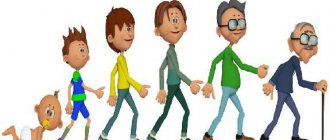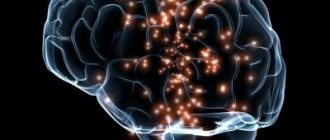Social psychology is a necessary scientific direction in psychology. The state of any socio-economic formation is interested in maintaining and developing such science. The information obtained with its help provides a general picture not only of the alignment of political forces in society, but also of the social position of communities and individual citizens.
Social Psychology
What is social psychology (SP)
The definition of this term is a branch of psychology that studies the psychological atmosphere in various social groups. Also, with the help of SP, patterns are identified in human behavior and the actions of an individual when he is part of any groups or communities.
Definitions of SP from the point of view of different sociologists
Important! The object that social psychology studies is man.
Interpersonal relationships of individuals within a community
Within a community, different types of relationships are established between individuals:
- official - based on structure, prescribed rules;
- unofficial - arise as a result of personal sympathies;
- business – arise during the performance of official duties;
- rational - based on an objective assessment of other participants;
- emotional – subjective assessment decides everything.
Community management regulates the relationship between the leader and subordinates. With positive dynamics, subordinates recognize the authority of the leader. If negative, they are inclined to protest and create conditions for the emergence of an informal leader.
Subject specifics
Social anxiety - what is it?
SP, as an independent discipline, emerged in 1908. At the same time, two scientists published their works: sociologist E.A. Ross published the book “Social Psychology” in America, and in Europe they became familiar with the work of psychologist W. McDougall “Introduction to Social Psychology.”
By the way! Doctor of Philosophy, Russian psychologist G.M. Andreeva, noted that the separation of SP into a separate branch of psychology was due to theoretical and social reasons.
Two books behind the birth of SP
G.M. Andreeva in her textbook “Social Psychology” (2001) notes the specifics of research in social networks. Obtaining data for study in other areas is built on the logical laws of physics and other exact sciences; this does not work in SP. Researchers face the following obstacles:
- problem of empirical data (type and volume);
- combining the obtained data into a single system with principles and put forward theories or hypotheses.
Until now, debates among sociologists continue about what types of data and to what extent should be allowed into the research process.
If we consider the data for studying in the field of joint ventures, they may look like this:
- information about the behavior of individuals in groups;
- information characterizing the parameters of consciousness of these people;
- data on psychological assessments of groups into which individuals are placed.
As for the amount of information to be processed, scientists have mixed opinions on which type to follow. Work in social and psychological study can be carried out using two types of volume:
- correlational - a large array of information is used, where all kinds of correlations are established;
- experimental - the amount of data is limited, but new variables are added to it and monitored.
For your information! Correlation is a dependence (relationship) between two or more random variables. Moreover, changes occurring in one (several) are followed by changes in another with a certain systematicity.
The integration of the obtained data into the joint venture is presented in a specific form. It is not possible to put forward a theory and work with it in a joint venture. Theories of a socio-psychological plan are completely different from those in the exact sciences. They lack deduction. Therefore, a hypothesis is initially put forward as a theoretical type of knowledge, and research is conducted on it. Further, as a result of the processed hypotheses, theoretical generalizations are made.
In SP, theories are developed that cover only narrow areas - certain aspects of people's lives.
A distinctive specific feature is the mandatory testing of formulated hypotheses and, as a result, the construction of predictions.
We often ignore people who need our help.
The influence of society can also manifest itself in unobvious things. For example, the more people who see that someone needs to be helped, the less B. Latane, J. M. Darley. Group inhibition of bystander intervention in emergencies. Journal of Personality and Social Psychology each will feel personally responsible for helping. This is called the bystander effect. Most often, examples are given of cases where many people witnessed a crime, but none of them contacted the police or tried to help the victim.
What to do about it
Knowing that the effect exists in itself greatly helps to overcome it. It is also important to understand MK Schweinfurth, J. Call. Reciprocity: Different behavioral strategies, cognitive mechanisms and psychological processes / Learning & Behavior that you are really able to help someone. And for this it is not at all necessary to be able to save drowning people or perform cardiac massage.
What does the SP do and what does it study?
Social perception - what is it in psychology
The task that a social psychologist sets for himself is to study the activities of an individual in various circumstances and his behavioral reactions, depending on being in different groups. If we turn to G.M. Andreeva, then, in her opinion, this subsection of science studies the following objects:
- groups of people;
- individuals;
- communication between individuals.
If we turn to other Soviet and Russian researchers in social psychology, this may be a different list.
Social Psychology
At the moment of birth, the human psyche is a “dough” from which personality is formed in the process of ontogenesis. With personal formation comes identification of oneself with the world around us and understanding of one’s place in it. By observing the behavior of the relatives around him, the child can learn the rules of behavior in the group. This is how the stages of human social adaptation begin.
However, it is no secret that different people assess the same situation differently. Moreover, when communicating, people mutually influence each other. Why is this happening? How to understand and predict the influence of individuals on the masses of people and the influence of a group of people on its individual members? How to communicate correctly so as not to fall under the influence of others? How to be able to separate your interests from the interests of society? How to learn to avoid quarrels and conflicts?
In his textbook “Social Psychology” A.L. Sventsitsky, professor at the Department of Social Psychology at St. Petersburg State University, argues that all these questions arise due to the diversity of forms of human communication. The joint venture is studying and finding answers to this.
By the way! The joint venture specializes in the study of human interactions and relationships. Its focus is on the consequences of interpersonal communication: the thoughts, actions and feelings of an individual.
Main tasks of social psychology
Researchers in this area are engaged in creating methods for determining how personal motives and attitudes are formed, and how much this formation depends on the conditions in which the individual finds himself, what influence the social group to which the individual belongs has on all this, and how his mental condition.
Important! The main task of SP is to build forecasts of the social behavior of individuals and social groups.
For example, the subject of social work. A psychologist at an enterprise or firm may be the study of human relations in the workplace. Using a scientific approach, the type of organization of collective relations can be determined, which will allow us to work more efficiently. Coherence and mutual understanding between employees will increase, both vertically and horizontally. This will contribute to the development of a healthy work environment and increased productivity.
If we set tasks for Russian researchers in the field of social psychology, then it is permissible to study the following questions:
- analyze foreign SP according to the content of its methods, theoretical ideas and results, with further consideration of their practical application in domestic society;
- develop the applied component of research to the problems of society and find ways to solve them with the help of joint ventures;
- develop a theory of political, ethnic, interstate and other social conflicts;
- conduct the preparation of theories for diagnosing socio-psychological forecasts, provide assistance to the population in the form of consultations to solve social problems and adapt to the new social reality.
The transition from hypotheses to socio-psychological theories in modern society due to great changes is very much in demand.
JV objectives
Basic forms and characteristics of communities
There are many types of social formations. To correctly classify groups in psychology, it is necessary to identify the exact criteria by which formations are evaluated.
Based on the nature of interaction, two groups are distinguished:
- primary - relatively stable, with constant close interaction between members, aimed at the socialization of the individual;
- secondary - numerous, with a predominantly formal type of interaction, aimed at achieving a specific goal.
Based on the type of interaction, communities are:
- formal - there is a legal status with clearly defined standards of relationships, the purpose of activity and a fixed hierarchy;
- informal - they appear spontaneously, have no official regulations, and quickly disintegrate.
The communities to which an individual belongs are called ingroups (family, educational or work community, ethnic minority). Communities into which an individual cannot or does not want to be included (another religious community, another family, another age category) are called outgroups.
Based on the number of people and the form of interpersonal connections, small and large groups are distinguished. Small is always small (two people united by a common goal are already considered a group) and has a number of constant characteristics:
- high stability of the composition (new members join rarely, often replacing those who have left);
- participants have similar values and moral standards;
- interpersonal relationships are intense, stable;
- the sense of belonging to a community is developed, arouses approval and pride among the participants;
- clear division of roles, the leader is the unconditional authority.
A large group is distinguished by its large composition and purpose. It is created to achieve a certain result, but there is no interaction between the participants that can ensure rapid achievement of the goal.
The highest form of a group, providing optimal conditions for the development and work of individuals, is a collective. Signs that distinguish a team from other formations: the coincidence of the goals of the individual and society, the unity of principles and value orientations.
Separation according to significant characteristics distinguishes between real and nominal groups. Real formations include those that have socially significant features:
- gender - man or woman;
- ethnicity - European, Asian, Latin American;
- age - child, teenager, adult, elderly;
- profession - teacher, doctor, businessman;
- marital status - married, divorced, single;
- place of residence - city, town, village;
- income level - wealthy, poor, rich.
The nominal ones include formations that are specially allocated for research (passengers entitled to discounted travel, scholarship students, mothers of large families). A person has the right to join such a formation and leave it at any time. For example, disability benefits can be withdrawn, and an unemployed person can get a job.
All groups, regardless of type, have the following mandatory qualities:
- referentiality - acceptance or rejection of values;
- leadership - the degree of influence of one person on another within the framework of formation;
- integrativeness - the degree of merging of participants, unity or disunity;
- microclimate - satisfaction and comfort;
- orientation - the value of attitudes for society.
The presence of these qualities distinguishes a group from a crowd - a spontaneous formation in which people do not have stable connections and the need for communication.
Methods of social psychology
Social adaptation - what is it in psychology
If you delve deeper into social psychology, then you can find out that its methodology is closely related to the general methods applicable to psychology. However, research methods in joint ventures have their own characteristics; they have the following short list:
- empirical research;
- modeling;
- socio-psychological influence;
- managerial and educational impact.
For your information! G.M. Andreeva divides the methods as follows: collection of information, its processing and methods of influence.
Empirical studies include the following methods:
- observation – registration of events of a socio-psychological nature in natural and laboratory conditions;
- document analysis - the study of any data contained on paper, electronic, film and other media;
- survey – interviewing, questioning and electronic voting on the given topics;
- testing – time-limited tests in the form of choosing the correct answer to given questions;
- sociometry - sociograms or sociometric matrices that carry the result of a study of the structural composition of small groups and individuals included in them;
- GOL (group personality assessment) - drawing up a characteristic of an individual from a group based on information provided by members of this group about the qualities of the person being characterized.
For your information. This also includes an experiment - identifying patterns and relationships between a certain situation and the subject of influence. In this case, certain conditions are artificially created. The advantage of the experimental method is that you can simulate the situation, influence it in the process, study reactions and record the results.
As for modeling, it can be noted that it can be reproduced in two directions:
- mental modeling – copying the processes of mental functions;
- creating a psychological model - reproducing an activity by recreating the conditions of such activity.
Interesting! By simulating the situation of a fire or any other dangerous event and turning on the “Alarm” button, you can, by observing the actions of employees, identify “weak points” in the character of colleagues.
In the process of implementing models, reliable information is obtained about the team as a whole and its individual representatives.
The method of socio-psychological influence includes methods of mental influence on people and their actions in society. They are implemented using the following technologies:
- information in the media;
- public performance;
- advertising;
- agitation;
- therapy sessions.
Using such methods, they change the social attitudes of citizens in the right direction.
Important! Using this method, you can not only influence people’s needs and motivation, but also their mood and life guidelines.
This is psychological manipulation of members of society; it can be both creative and destructive. For example, currently, through such influence, the phenomenon of substitution of moral values and concepts is occurring in the world. The institution of family and marriage is being destroyed by imposing tolerance towards same-sex marriages and sexual minorities. The importance of victory in the war against fascism is diminished, and the “heroism” of the Nazis and their accomplices is widely promoted in Europe.
An example of managerial and educational influence is raising a child in a family where parents, through personal example, confidential conversations and teaching, form the consciousness of the child, while not forgetting to teach, praise for successes and explain failures.
Impacts on an individual with this method include:
- beliefs;
- threats or encouragement;
- punishments;
- personal example.
In addition, you can influence through the opinion of society, education, upbringing and general activities.
Methods used in joint ventures
Functions and conditions for normal development
The community has a number of functions that affect each member:
- socializing - assimilation of norms of behavior, education;
- instrumental - carrying out the necessary activities;
- expressive - satisfying the need for acceptance, emotional contacts;
- supportive - moral support.
If the functions are not fulfilled, the community cannot function and quickly disintegrates. Normally, it should develop as a community and provide conditions for the development of individuals.
The structure of modern social psychology
The socio-psychological structure depends on the areas of human activity, objects and research methods. One type of joint venture structure is as follows:
- SP of the individual;
- psychology of communication and relationships (interpersonal interactions);
- psychology of small groups;
- SP between groups (intergroup interaction);
- psychology of social phenomena and large public groups.
By the way! The course and nature of any of the listed types of interaction depend on the characteristics of human activity.
JV structure
Changes in the government system, internal politics and difficulties in the labor market have caused many citizens to feel a sense of uselessness and lack of demand. Consultation with a social psychologist is one of the steps to solve an individual problem with social adaptation.
Mandatory stages of development and roles of individuals within formations
A group is not formed immediately after people unite. Stages of socio-psychological maturity:
- Conglomerate - strangers find themselves in the same territory for the first time.
- A nominal group - a community receives a name and status.
- Association - a structure is formed, common interests appear.
- Cooperation is active joint interaction, clear designation of roles and structure, formation of intra-group morality.
- Autonomy - in the process of joint activity, the desires of individuals are satisfied.
- A corporation is a closed community that is opposed to others.
- Team - joint activity presupposes integrativeness (collective decision-making).
Each person has his own role in formation, which he performs consciously or simply obeys the imposed model of behavior. There are 3 types of roles:
- Social roles. Necessary to maintain dynamics. Increase cohesion and emotional connections between people. These include: mediator, peacemaker, observer.
- Roles aimed at performing common tasks. They help achieve the goal set before the formation. They assume rational use of resources and minimize efforts. These include: initiator, informant, coordinator, mentor.
- Roles aimed at achieving personal interests. They disorganize participants by using community resources to achieve their own benefit. These include: loner, skeptic, aggressor, cynic.
The manager’s task is to monitor the fulfillment of roles, encourage relationships that are beneficial for the community, and promptly stop the activities of disruptors.
Today's view
Modern society has a complex and multivariate structure. Now this is the interaction of different groups of people who differ in moral and intellectual development, style and lifestyle, family ties, and social origin.
This is what characterizes modern society:
- There is a distribution of benefits, but not always fair and just for each person included in this group
- Mobility of the hierarchical system, frequent change of leader
- Members of one society may have a common territory, but are capable of frequent changes in their localization, which significantly affects the structure of the entire group and its activities
- Relationships between people are constantly changing and restructuring
- Members of the same society are united by fear of the justice system
- All members of the group have one goal - to improve the quality of life of society, while to achieve it they can engage in completely different activities, in different areas
- A complex system of distribution of labor and responsibilities that affects the overall indicators of social development
As you can see, the term “society” has several interpretations, but all studies also have common points and characteristics of modern social society.
Family as the main source of society
The emergence of clan communities with their own internal rules of functioning provided its members with security and unity of values. People create families - “small cells”, within which they are formed, determined with life views and foundations, in order to then be able to enter the larger society.
What is a “social institution” - examples and structure in the article at the link.











